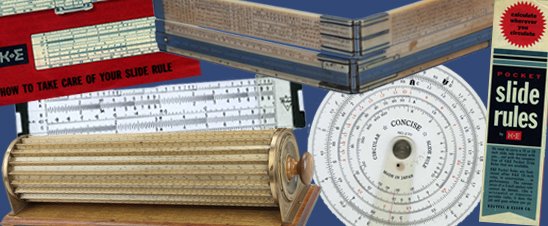This ten-inch white plastic one-sided linear slide rule has a clear plastic indicator that goes all the way around the instrument. The posts holding the rule together are also white. The base has K, A, D, and L scales, with B, T, S, CI, and C scales on the slide.
- Description
-
This ten-inch white plastic one-sided linear slide rule has a clear plastic indicator that goes all the way around the instrument. The posts holding the rule together are also white. The base has K, A, D, and L scales, with B, T, S, CI, and C scales on the slide. The left end of the slide is marked: PICKETT (/) NO. 120. The right end of the slide is engraved with the Pickett triangular logo used between 1958 and 1962. The bottom right corner of the base is marked: MADE IN U.S.A.
-
The rule fits in a black imitation leather stitched sheath. Pickett advertised this "trig trainer" slide rule in the September 17, 1961, issue of the Chicago Daily Tribune. In later years, Pickett added the model name "Microline" to the model number. The company intended that students would learn fundamental operations with these rules and then graduate to its more complex aluminum rules. Compare the five-inch student rule, 1991.0445.02, and the ten-inch Microline duplex rule, 1989.0325.07.
-
Mechanical engineer Edward L. Heller (1912–2007) donated this example to the Smithsonian. From 1956 to 1959, he worked as a nuclear project engineer for H. K. Ferguson Co. He was a technical manager for General Dynamics Corporation from 1959 to 1967. He married in 1946 and raised two children. Since the slide rule was probably purchased about 1960, Heller may have expected that his children would use it.
-
References: American Men and Women of Science, 12th ed. (New York: J. Cattell Press, 1972), iii:2620; International Slide Rule Museum, "Pickett All-Metal Slide Rules," http://sliderulemuseum.com/SR_Dates.htm#Pickett.
- Location
-
Currently not on view
- date made
-
1958-1962
- maker
-
Pickett & Eckel, Incorporated
- ID Number
-
1984.1068.03
- accession number
-
1984.1068
- catalog number
-
1984.1068.03
